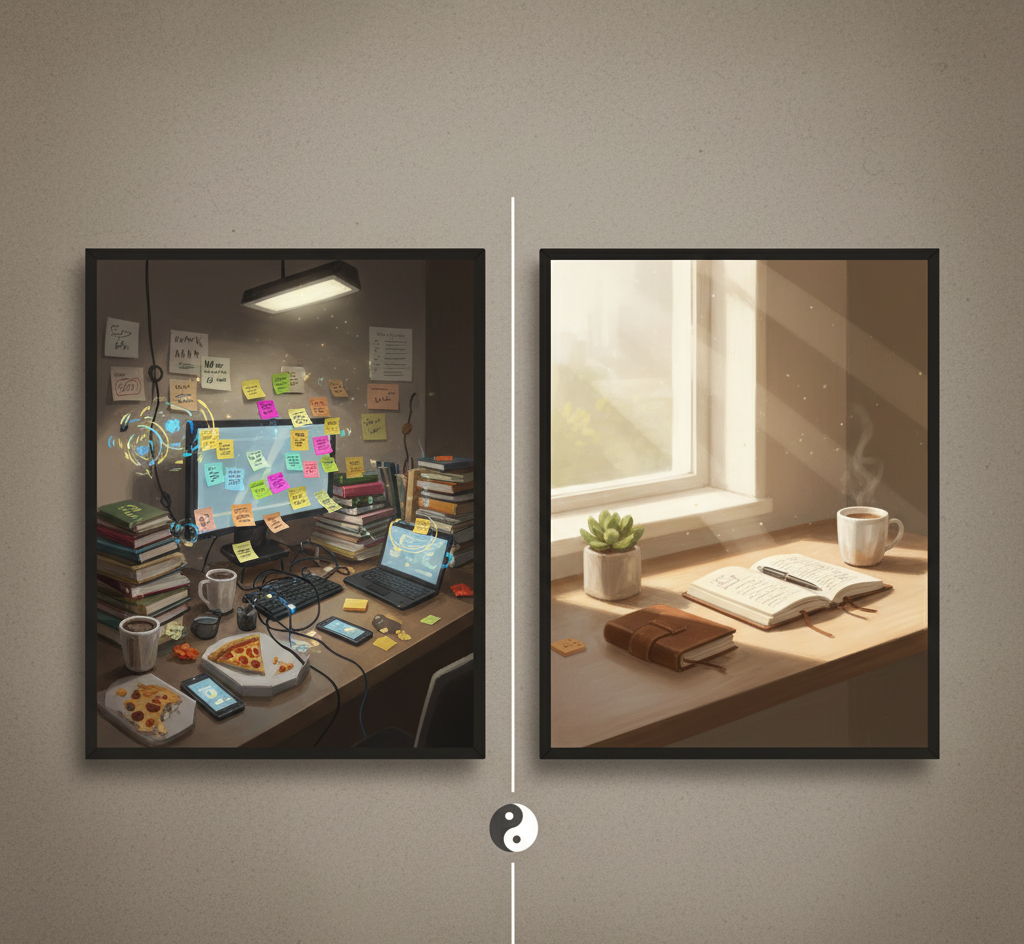Have you ever noticed how quickly the day can slip into autopilot the moment you open your task list? Emails flood in, deadlines loom, and suddenly your sense of clarity gets replaced by a sense of survival. A to-do list is supposed to help, yet sometimes it just adds to the noise.
I used to start my mornings by jumping straight into tasks, believing productivity meant speed. But I found that rushing in left me reactive, not intentional. That’s when I began experimenting with a short ritual before touching my to-do list.
This article builds on insights I shared in 7 Mindful Routines That Changed My Focus and zooms in on one specific idea: creating space before the list. By the end, you’ll have a simple framework you can adapt to start your day with clarity, calm, and focus.
Why Not Jump Straight Into the To-Do List?
Most of us open our lists the moment we start work, hoping it will give us order. But here’s the trap: a to-do list reflects urgency, not priority.
- Urgency is what shouts the loudest.
- Priority is what actually moves you forward.
If you don’t pause before scanning the list, you risk letting urgency hijack your day. I’ve learned the pause isn’t wasted time — it’s the investment that makes every following task more aligned.
Key takeaway: Clarity before action always outperforms speed without direction.
My Pre–To-Do Ritual

Here’s the exact sequence I use every morning before I even look at tasks. It takes under ten minutes but shifts my whole day.
1. A One-Minute Reset
Before opening my laptop, I sit still for sixty seconds. I close my eyes, notice my breath, and let the noise in my head settle. Some days it feels like a full exhale for my brain.
- Timer set for one minute.
- No goals, no judgment. Just presence.
It’s the gentlest of beginnings, but it reminds me: I run the day, not the other way around.
2. Three Daily Intentions
Instead of diving into tasks, I ask: “What three qualities do I want to bring into today?” Mine often look like: focus, patience, curiosity.
Writing down qualities, not tasks, sets an inner compass. Even when the day gets messy, I have a direction to return to.
- Choose 3 words.
- Write them down somewhere visible (I use Notion).
Key takeaway: You are not just checking boxes — you’re shaping how you move through them.
3. A Quick Calendar Scan
This step is practical but powerful. Before tasks, I scan my calendar. What meetings, deadlines, or commitments already define the structure of my day?
I often find my task list is unrealistic when stacked against the calendar. This scan stops me from setting myself up for disappointment.
- Look at time blocks.
- Note realistic task capacity.
Think of it as adjusting expectations before the list dictates them.
4. The Question That Centers Me
Finally, I ask: “If I could only get one thing done today, what would actually matter?”
This isn’t about efficiency — it’s about meaning. Some days, the answer is finishing a client draft. Other days, it’s calling someone I’ve been putting off.
That single priority becomes my anchor. Even if the rest of the list unravels, I know I’ve honored the most important thing.
Tools That Support This Ritual

A ritual like this doesn’t need tools, but the right ones can help you stay consistent.
- Notion: I keep my daily intentions and anchor question here. It keeps things visible.
- A simple timer app: Great for the one-minute reset.
- Calendar integration (Google or Outlook): The calendar scan only works if you actually check it.
I’ve found Notion especially useful — it’s the same space where my to-do list lives, but my ritual sits above the list, both visually and mentally.
Why This Matters More Than You Think
The surprising part? Doing this small ritual hasn’t slowed me down — it’s sped me up. I make decisions faster because I’ve already clarified what matters. I avoid guilt from unrealistic lists because I’ve checked my calendar first.
The difference is subtle but profound: instead of letting my to-do list dictate my mood, I enter the list already centered.
Key takeaway: Mindful pauses aren’t luxuries; they’re multipliers of productivity.
Conclusion

Starting the day doesn’t have to mean diving into tasks immediately. By adding a simple ritual before your to-do list, you shift from reactive to intentional, from scattered to focused.
To recap:
- Pause for one minute.
- Set three daily intentions.
- Scan your calendar.
- Ask the one-priority question.
The practice is short, but the payoff is a day aligned with clarity rather than chaos.
If you want to explore more ways mindful routines can transform focus, I recommend reading my earlier post: 7 Mindful Routines That Changed My Focus. You’ll find other small practices that, together with this one, can help you build flow instead of fight your day.





